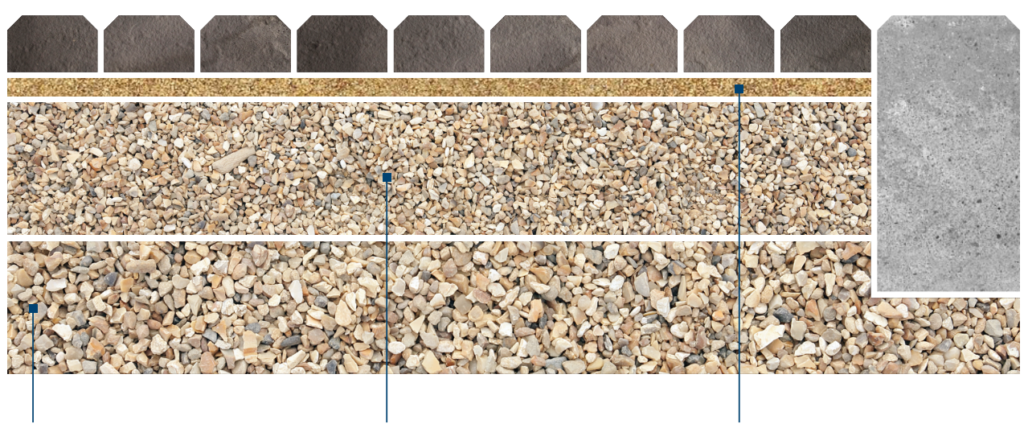Written by Barkman Concrete Published on November 16th, 2021
It’s What’s Underneath That Counts
One of the most common mistakes you can make when installing pavers is not having the correct base layers. In dealing with hardscape products, your base includes the layers of aggregate directly under your paving stones that give your hardscape stability, strength, and permeable power.
Let us go over what each layer is and why they are important.
Top Layer
Compacted Native
Soil Subgrade
Preparation of the native soil subgrade is critical to the performance of an interlocking concrete pavement. Large rocks, roots, organic material and all other debris should be removed from the native soil subgrade and in turn be replaced with the crushed aggregate material that will be used to construct the compacted aggregate base. From there, the soil subgrade should be compacted to a minimum 98% standard Proctor density, with modified Proctor density being the preferred standard to use for vehicular applications. The overall success of an interlocking concrete pavement begins with a native soil subgrade that has been prepared and compacted as per the standards and guidelines set out by the Interlocking Concrete Pavement Institute.
Middle Layer
Compacted Aggregate
Base Layer
The functionality, lifespan and success of an interlocking concrete pavement application is directly related to the compacted aggregate base installed beneath it. Each unique project requires that a proper base design and materials be determined based upon several different variables. Contact your local Barkman representative for more information.
Bottom Layer
Screeded
Bedding Layer
Like the compacted aggregate base, the screeded bedding layer plays a vital role in the overall performance of an interlocking concrete pavement application. The Interlocking Concrete Pavement Institute states that precast concrete pavers should be installed on top of an uncompacted 25 mm layer of concrete sand (CSA A23.1). For more information on what your commercial project will require, you can get in touch with your local Barkman representative. The ICPI technical specifications are also great resources for application information. (www.icpi.org)













